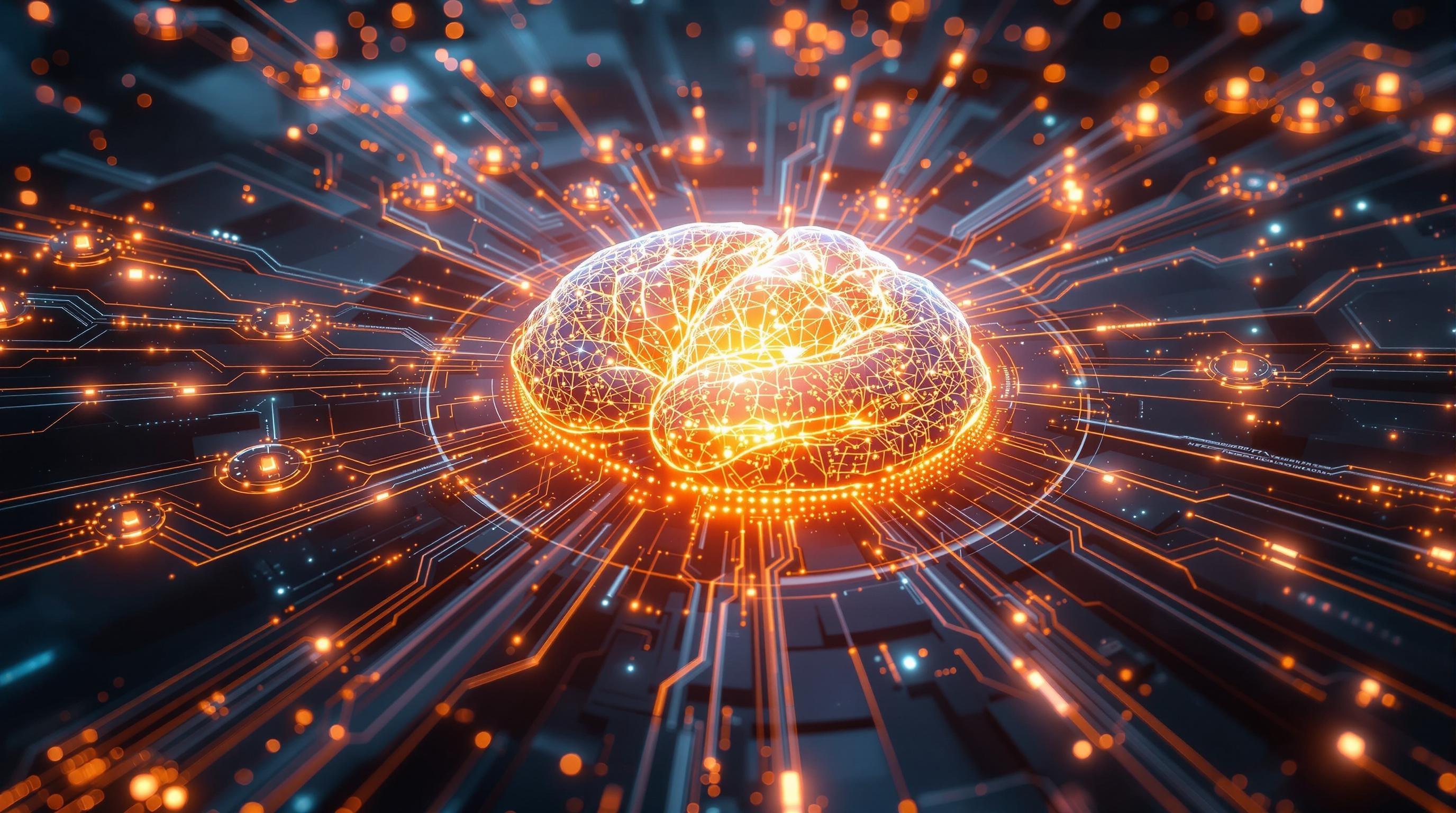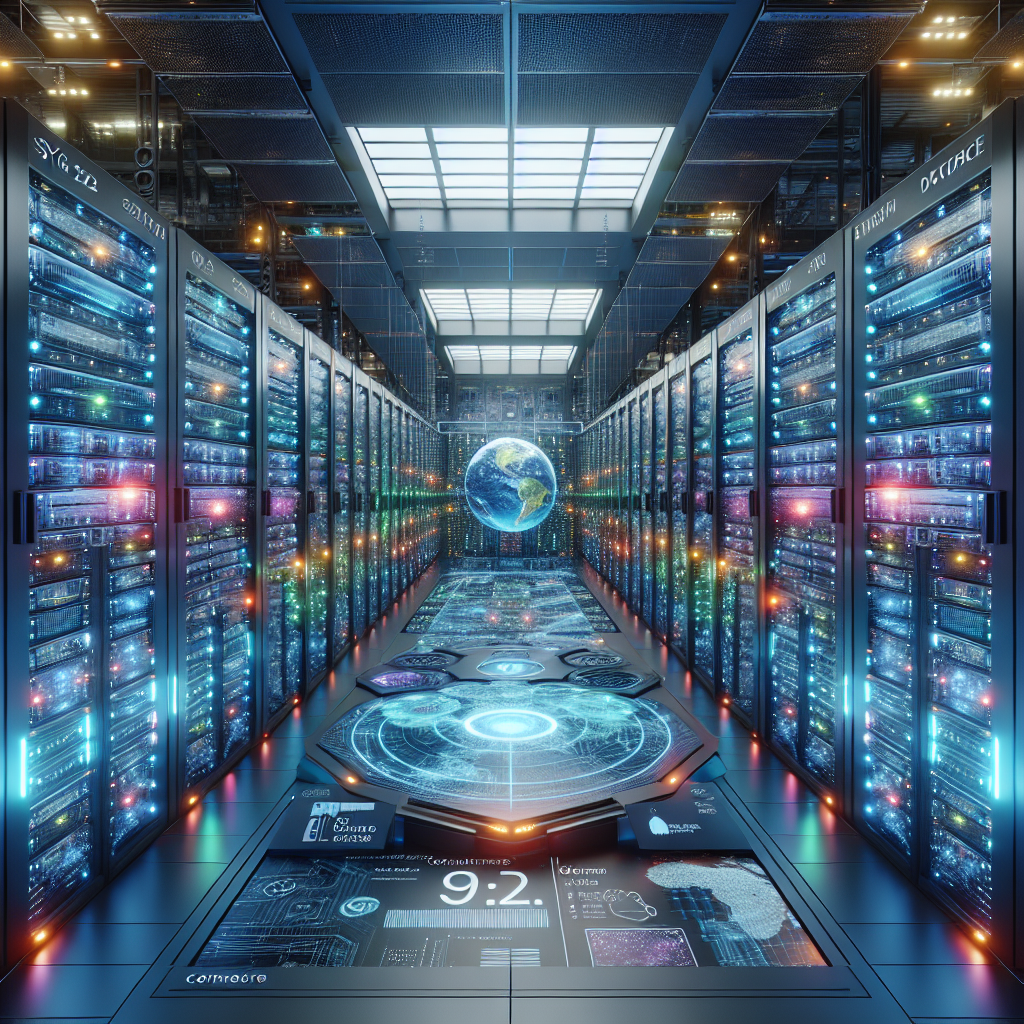🌐 International AI Press Digest – August 4, 2025 AI Revolution in Overdrive: GPT-5, Infrastructure Boom, and Regulatory Battles

AI's rapid integration is causing unprecedented job displacement across sectors, demanding immediate action to prepare the workforce for this shift. To future-proof your career, explore retraining programs in AI development and prompt engineering to stay competitive. Stay informed on the latest developments in AI and the job market to make proactive career decisions.
GPT-5: OpenAI's Next-Gen Model Set to Revolutionize AI
Hold on to your hats, folks, because the AI world is about to get another seismic jolt!
The Dawn of GPT-5: A New Era Begins
The whispers have been growing louder, the anticipation palpable, and now it seems confirmed: OpenAI is poised to unleash its next-generation model, GPT-5, upon the world in early August 2025. This isn't just another incremental update; industry insiders suggest that GPT-5 represents a monumental leap forward, one that could redefine the very landscape of artificial intelligence.
Reasoning and Coding Prowess Unleashed
So, what makes GPT-5 so special? From what we've gathered, it boasts a vastly improved reasoning engine, drawing on the innovative architecture of the mysterious 'o3 system'. This suggests a move beyond pattern recognition to genuine understanding and problem-solving capabilities. Imagine an AI that doesn't just generate text, but actually thinks its way through complex issues. Furthermore, GPT-5 is rumored to possess significantly enhanced coding abilities. This could democratize software development, allowing individuals with limited technical expertise to bring their ideas to life.
Sam Altman's Cryptic Clues: The 'Here It Is' Moment
The excitement surrounding GPT-5 has been further amplified by none other than Sam Altman himself. Altman's cryptic pronouncements of a coming "here it is" moment have sent the AI community into a frenzy of speculation. Could this be the moment AI truly transcends its limitations, achieving a level of sophistication previously confined to science fiction? While the exact nature of this "moment" remains shrouded in secrecy, one thing is clear: Altman believes GPT-5 is a game-changer.
Transforming Business and Personal AI Interactions
The implications of GPT-5's capabilities are far-reaching. Businesses could leverage its enhanced reasoning and coding skills to automate complex tasks, develop innovative products, and gain a deeper understanding of their customers. Individuals could find GPT-5 to be an indispensable personal assistant, capable of handling everything from scheduling appointments to conducting research. The possibilities are truly limitless, and the only constraint is our imagination.
Fueling the AI Arms Race
Of course, such a significant advancement in AI technology is bound to have geopolitical ramifications. The release of GPT-5 is likely to further intensify the global AI arms race, as nations and corporations vie for dominance in this critical field. The stakes are high, and the competition is fierce, but ultimately, the pursuit of ever-more-powerful AI models could lead to breakthroughs that benefit all of humanity. We may also see other companies attempt to create tools to compete, such as DeepSeek who aim to build AI models that are both powerful and cost-effective.
GPT-5 isn't just a new model; it's a potential catalyst for widespread AI adoption and innovation.
This launch is poised to be more than just an upgrade; it's a potential shift in how we perceive and interact with artificial intelligence, setting the stage for more sophisticated AI interactions in both business and personal contexts. As the world awaits its arrival, the anticipation surrounding GPT-5 underscores the relentless pace of progress in the field of AI and the transformative potential that lies ahead.

Google's Gemini 2.5 Deep Think Achieves Historic AI Milestone
The AI world is buzzing as Google's DeepMind unveils its latest marvel: Gemini 2.5 Deep Think. This isn't just another incremental update; it's a leap towards human-level problem-solving, signaling a new era in AI capabilities. Let's dive into what makes this release so groundbreaking.
Unleashing the Power of Multi-Agent Parallel Processing
At the heart of Gemini 2.5 Deep Think lies its innovative multi-agent parallel processing architecture. Imagine a team of expert AI agents, each tackling different aspects of a complex problem simultaneously. These agents then share their insights and collaborate to reach a unified solution. This parallel approach allows Gemini 2.5 to process information much faster and more efficiently than previous models. Think of it like this: instead of one chef preparing an elaborate meal from start to finish, you have a team of specialized chefs working in parallel – one handling the appetizers, another the main course, and so on – significantly reducing the overall cooking time.
A Gold Medal Performance
To demonstrate its advanced reasoning capabilities, Gemini 2.5 Deep Think was put to the test at the International Mathematical Olympiad (IMO), where it achieved a gold medal performance. This is not just about crunching numbers; it requires a deep understanding of mathematical principles, creative problem-solving, and the ability to construct logical arguments. This achievement underscores Gemini 2.5's ability to not only process information but also to reason and innovate, setting it apart from previous AI models.
Google Ultra Plan Subscription
For those eager to get their hands on this cutting-edge technology, Gemini 2.5 Deep Think is available exclusively to Google Ultra plan subscribers at a price of $250 per month. This premium access reflects the advanced capabilities and computational resources required to run the model. While the price point positions it towards professional and research applications, it also signifies Google's commitment to delivering top-tier AI solutions to its most dedicated users.
Human-Expert Level Performance
The most remarkable aspect of Gemini 2.5 Deep Think is its demonstrated human-expert level performance in complex problem-solving. It's not just about answering questions; it's about understanding the nuances of a problem, generating hypotheses, testing those hypotheses, and arriving at a well-reasoned conclusion – skills previously thought to be exclusive to human intelligence. This level of performance opens up a wide range of possibilities across various fields.
Applications in Research and Scientific Discovery
One of the most promising areas for Gemini 2.5 Deep Think is its potential to accelerate research and scientific discovery. By assisting researchers in analyzing complex datasets, generating new hypotheses, and designing experiments, Gemini 2.5 can significantly shorten the time it takes to make breakthroughs in fields such as medicine, materials science, and climate change. Imagine an AI assistant capable of sifting through millions of research papers to identify potential drug candidates or designing novel materials with specific properties – that's the kind of impact Gemini 2.5 could have. Google DeepMind is pushing the boundaries of AI, and this could change how we approach complex challenges and unlock new frontiers of knowledge. Don't forget to stay up to date with the latest from AI News to keep up with the evolution of DeepMind and others.
The launch of Gemini 2.5 Deep Think marks a significant step forward in the pursuit of artificial general intelligence (AGI). Its multi-agent architecture, gold medal performance, and human-expert level problem-solving abilities showcase the transformative potential of AI in various fields. As AI continues to evolve, we can expect even more groundbreaking innovations that will reshape our world in profound ways. The question now is, how will these advancements integrate with, and potentially redefine, the landscape of Prompt Engineering?
Amazon's AI Agent Marketplace Goes Live, Empowering Enterprise Automation
The race to dominate the agentic AI space just intensified, and Amazon is making a bold move.
AWS Launches AI Agent Marketplace
Amazon Web Services (AWS) has officially launched its AI Agent Marketplace, a dedicated platform designed to connect businesses with a diverse ecosystem of pre-built AI agents. Think of it as an app store, but instead of games and productivity tools, you're browsing intelligent assistants capable of automating a wide range of business tasks. This isn't just another feature release; it's a strategic declaration of intent by AWS to lead the charge in democratizing access to agentic AI.
Anthropic: A Key Partner
One of the most notable aspects of this launch is the prominent role of Anthropic, the AI safety and research company behind Claude, a powerful AI assistant known for its reasoning and coding abilities. By featuring Anthropic as a key partner, AWS is signaling its commitment to offering cutting-edge, reliable, and responsible AI solutions. This collaboration also highlights the increasing importance of safety and ethical considerations in the development and deployment of AI agents.
Browse, Install, and Deploy
For enterprises, the AWS AI Agent Marketplace offers a streamlined path to adoption. Instead of building AI agents from scratch – a process that can be time-consuming and require specialized expertise – businesses can now browse a curated selection of agents, each designed to tackle specific challenges. The platform simplifies installation and deployment, making it easier than ever to integrate AI-powered automation into existing workflows. Imagine a marketing team quickly deploying an AI agent to analyze customer sentiment or a customer service department using an agent to handle routine inquiries – the possibilities are vast.
Empowering Developers
But the AWS AI Agent Marketplace isn't just for end-users; it's also a powerful platform for developers. It provides a channel to create, distribute, and monetize their own AI agents. This open ecosystem fosters innovation and ensures that the marketplace continues to evolve and adapt to the changing needs of businesses. AWS provides the infrastructure and the audience; developers bring the ingenuity and the specialized AI solutions.
AWS's Strategic Bet on 'Agentic AI'
This launch underscores AWS's strategic bet on 'agentic AI,' a paradigm shift where AI systems move beyond simple tasks and become autonomous decision-makers. These agents can independently plan, execute, and adapt to achieve specific goals, mirroring the way humans approach complex problems. Agentic AI represents the next evolution of automation, promising to unlock unprecedented levels of efficiency and productivity. To understand more about the overall trends, keep an eye on AI News.
Accelerating Enterprise Adoption
The AWS AI Agent Marketplace is poised to accelerate the enterprise adoption of AI agents by lowering the barriers to entry. The platform provides a central hub for discovery, evaluation, and deployment, simplifying the process of finding the right AI agent for a given task. With the backing of AWS's robust infrastructure and the participation of leading AI companies like Anthropic, businesses can confidently embrace agentic AI and unlock its transformative potential.
Transforming Business Automation
Ultimately, the AWS AI Agent Marketplace is about transforming business automation and decision-making. By empowering enterprises with intelligent AI agents, AWS is enabling them to streamline operations, improve customer experiences, and gain a competitive edge. This launch marks a significant step forward in the AI revolution, bringing the power of autonomous AI systems to a wider audience. The platform will likely be updated regularly, to stay on top of the best tools consider checking out the Top 100 AI Tools.
By offering a curated marketplace for AI agents, AWS is not just selling a product; it's providing a pathway to a future where AI is seamlessly integrated into every aspect of business, driving innovation and transforming industries.

Meta's $72 Billion AI Investment Signals New Infrastructure Arms Race
Hold on to your hats, folks, because the AI revolution just kicked into ludicrous speed! Meta's audacious $72 billion investment in AI infrastructure is not just a financial headline; it's a declaration of war in a rapidly escalating tech arms race. Buckle up as we unpack what this massive spending spree means for the future of AI, energy consumption, and even the shape of our regional economies.
Building Colossal AI Superclusters
So, where is all this money going? Meta isn't just buying a few extra servers; they're constructing colossal AI superclusters. Two prime examples are Project Prometheus in Ohio and Project Hyperion in Louisiana. These aren't your average data centers; they're purpose-built fortresses designed to house and cool the immense computing power required to train and run the next generation of AI models. Think of them as the digital equivalent of the Hoover Dam, but instead of generating electricity, they're generating intelligence.
Project Prometheus (Ohio): Details are still emerging, but early reports suggest this will be a significant expansion of Meta's existing presence in Ohio.
Project Hyperion (Louisiana): This project is particularly jaw-dropping. Rumors suggest that Hyperion could potentially reach a staggering 5 gigawatts of computing power. To put that in perspective, that's enough juice to power several small cities!
Hyperion: 5 Gigawatts of AI Muscle?
Let's dwell on that 5-gigawatt figure for a moment. If true, Hyperion would represent a quantum leap in AI infrastructure. To visualize this, imagine stacking thousands upon thousands of the most powerful GPUs (Graphics Processing Units) into a single location, all interconnected with ultra-fast networks. This concentration of computing power allows for the training of massive AI models that would be impossible to run on smaller systems. This kind of scale is essential for pushing the boundaries of AI research and development, especially in areas like AI image generation and large language models.
Zuckerberg's Vision: Personal Superintelligence
At the heart of this massive investment lies Mark Zuckerberg's ambitious vision for what he calls 'personal superintelligence.' He envisions a future where AI assistants are deeply integrated into our lives, anticipating our needs, solving complex problems, and even augmenting our creativity. Think of it as having a hyper-intelligent, always-on personal assistant that knows you better than you know yourself.
"Our goal is to build the best AI and make it available to everyone," says Zuckerberg. "We believe that personal superintelligence will unlock incredible new experiences and opportunities."
The Dawn of an AI Infrastructure Arms Race
Meta's aggressive move is a clear signal that the AI landscape is becoming increasingly competitive. Other tech giants, like Google and Microsoft, are also pouring billions into AI infrastructure, creating what can only be described as an AI infrastructure arms race. This competition is driving rapid innovation in hardware, software, and data center design. It is reminiscent of the space race of the 1960s, but instead of reaching the moon, the goal is to achieve AI supremacy. This is why tracking AI News is now essential.
Implications: Energy Consumption and Economic Development
This surge in AI infrastructure development has significant implications:
Energy Consumption: AI superclusters are incredibly power-hungry. The environmental impact of this increased energy demand is a growing concern, pushing companies to seek more sustainable energy sources.
Regional Economic Development: The location of these AI superclusters can bring significant economic benefits to the surrounding regions, creating jobs, attracting talent, and fostering innovation ecosystems. For example, the promise of jobs in data centers could boost the local economy.
Meta's massive AI investment is a watershed moment, marking a new era of intense competition and rapid advancement. This infrastructure arms race will undoubtedly shape the future of AI and have profound implications for society. The quest for 'personal superintelligence' is on, and the stakes are higher than ever. Now, let's shift gears and examine the regulatory battles looming on the horizon as governments worldwide grapple with the implications of this AI revolution...
EU AI Act Takes Full Effect, Setting Global Standards for AI Regulation
The AI landscape is being reshaped as the EU AI Act's obligations for general-purpose AI models officially take effect, marking a pivotal moment for AI regulation worldwide.
Navigating the EU AI Act: Key Obligations
The EU AI Act isn't just a suggestion; it's a comprehensive set of rules that AI developers and deployers must now adhere to. Think of it like a new set of traffic laws for the digital world, ensuring AI systems operate safely and ethically. Among the core obligations are:
Transparency: AI models must be transparent about their capabilities and limitations. This means providing clear documentation and explanations about how the AI works and what it can do. It's like putting a nutrition label on your AI, so users know what they're consuming.
Copyright Compliance: Developers need to respect copyright laws and ensure their AI models don't infringe on existing intellectual property. This is akin to making sure your AI doesn't plagiarize someone else's work.
Safety Requirements: AI systems must meet rigorous safety standards to prevent harm or misuse. This includes measures to mitigate risks, ensure data security, and protect fundamental rights. Essentially, it's about building AI that's not only smart but also responsible.
The Stakes: Fines and Enforcement
The EU AI Act isn't all bark and no bite. Violations of the act can result in hefty fines, potentially reaching up to €35 million or 7% of a company's global turnover, whichever is higher. These are serious penalties designed to ensure compliance and deter bad actors. This is a clear message: the EU is serious about AI regulation, and companies need to take it seriously too.
A Divided Front: US Companies and the EU Code of Practice
Interestingly, while many major U.S. companies have signed onto the EU's Code of Practice for AI, which is a precursor to the full Act, there are some notable holdouts. Most prominently, Meta has refused to sign. This highlights a potential divergence in approaches to AI governance between the U.S. and Europe, with some companies seemingly more willing to embrace regulation than others.
A Global Precedent: The EU's Pioneering Role
The EU AI Act is a landmark achievement, establishing the world's first comprehensive AI regulatory framework. This framework not only governs AI within the EU but also sets a global precedent for AI governance. It's like the EU is writing the first chapter in a global rulebook for AI.
This regulation will likely influence other countries and regions as they develop their own AI policies. The EU's approach could become a blueprint for responsible AI development and deployment worldwide. As AI continues to evolve, the principles and standards established by the EU AI Act may very well shape the future of AI innovation and its impact on society. Stay informed on the latest developments in AI News to see how these regulations continue to unfold.
The EU AI Act is a significant step towards ensuring that AI is developed and used in a way that benefits society as a whole. The implications for businesses, researchers, and policymakers are profound, and the coming years will be critical in determining how effectively this framework can promote responsible AI innovation. Want to learn more about AI? Check out our AI Fundamentals section.
Trump Administration Unveils AI Action Plan, Prioritizing Innovation and Competition
Just as the dust settled from OpenAI's latest developments, the Trump administration threw a curveball into the AI landscape with the unveiling of its own comprehensive AI strategy.
'Winning the AI Race: America's AI Action Plan'
The White House rolled out 'Winning the AI Race: America's AI Action Plan,' a bold initiative designed to cement U.S. leadership in artificial intelligence. This isn't just another policy paper; it's a multifaceted strategy encompassing over 90 distinct federal policy actions aimed at fostering AI innovation, bolstering infrastructure, and strategically navigating the global AI landscape through diplomacy.
Tripling Down: Innovation, Infrastructure, and Diplomacy
The plan’s core tenets revolve around accelerating AI innovation through targeted research and development initiatives, fortifying the nation's AI infrastructure, and establishing strategic alliances to promote American AI values globally. It is designed to promote the development of AI on US soil while attempting to combat the influence from other nations.
Cutting the Red Tape: Reducing Regulatory Barriers
One of the most striking aspects of the plan is its commitment to reducing regulatory barriers that could stifle AI development. The administration aims to create a more permissive environment for AI companies, believing that less regulation will spur faster innovation and attract more investment. For example, it encourages streamlined permitting processes for AI infrastructure projects and provides new procurement guidelines that prioritize AI-driven solutions.
The Ideological Battlefield: Ensuring 'Bias-Free' AI
Perhaps controversially, the plan also emphasizes ensuring that AI systems remain free from what it terms 'ideological bias.' While the intent is to promote fairness and objectivity, critics argue that defining and enforcing such a standard could lead to censorship or the suppression of diverse viewpoints. The implications of this aspect of the plan are complex and could significantly shape the development and deployment of AI in the years to come.
Building the Foundation: Streamlined Permitting and Procurement
To translate its vision into reality, the administration is focusing on practical measures such as streamlining the permitting process for AI infrastructure projects like data centers – the very backbone of AI development. Faster approvals and reduced bureaucratic hurdles aim to accelerate the deployment of critical resources. In addition, the plan introduces new procurement guidelines that prioritize AI-driven solutions across government agencies, creating a built-in market for AI innovation.
A Shift in Strategy: AI Deregulation and the China Challenge
This AI Action Plan signals a clear shift toward AI deregulation, contrasting with the more cautious and regulatory-focused approaches being considered in other parts of the world. This approach seems designed to ensure the US maintains a competitive edge, especially in the face of growing competition from countries like China. The administration views AI as a strategic asset and is determined to win the AI race, positioning the U.S. as the global leader in this transformative technology. This may have impacts on the AI News as the new plans unfold. It is also a hot topic for AI in Education.
Whether this bold approach will ultimately succeed remains to be seen, but one thing is clear: the AI revolution is not just about technology; it's about strategy, policy, and the future of global power. This plan is sure to further revolutionize many AI tools, such as ChatGPT, a powerful AI Chatbot that uses advanced AI to generate human-like text, and Midjourney, a powerful AI image generator known for its artistic and photorealistic results.
DeepSeek's Efficiency Revolution Disrupts Global AI Market
The AI world is constantly evolving, but every so often, a development comes along that truly shakes the foundations. DeepSeek's recent efficiency breakthrough is one such moment, sending ripples throughout the global AI market and challenging long-held assumptions. Let's dive into how this is happening.
DeepSeek R1: Performance That Rivals the Giants
At the heart of this disruption is DeepSeek's R1 model. What makes it so noteworthy? It achieves performance metrics comparable to industry titans like GPT-4 and the latest Claude 3.5 models. That's like a startup sports car keeping pace with a Ferrari and a Porsche on the racetrack. This parity in performance, especially in complex reasoning and coding tasks, has quickly made DeepSeek a serious contender in the AI arena.
The implications are huge: businesses and developers now have another powerful option when choosing an AI model, potentially leading to more competitive pricing and diverse applications.
The $5.6 Million Game Changer
Now, here's where things get really interesting. While achieving comparable performance to GPT-4 and Claude is impressive, the real kicker is the cost: DeepSeek trained its R1 model for a mere $5.6 million. This figure is a fraction of what's typically spent to train these large language models (LLMs). It’s akin to building a skyscraper for the price of a suburban home – a feat previously considered impossible. This cost efficiency has the potential to reshape the economics of AI development. Lower training costs mean:
More accessible AI development: Smaller companies and research labs can now afford to build and train cutting-edge AI models, leveling the playing field.
Faster innovation: With reduced financial barriers, more experimentation and model iterations become possible, accelerating the pace of AI advancement.
Wider adoption: The lower cost could translate to more affordable AI-powered products and services, making them accessible to a broader user base.
Open-Source AI: A Democratizing Force
DeepSeek's commitment to open-source principles further amplifies its impact. By releasing its model to the public, DeepSeek is fostering collaboration and innovation within the AI community. The R1 model briefly topped Apple's App Store downloads, showing the huge demand. Think of it as sharing the blueprints to a revolutionary engine – anyone can tinker with it, improve upon it, and adapt it for their own purposes.
The benefits of open-source AI are manifold:
Community-driven improvement: Developers and researchers worldwide can contribute to refining and enhancing the model, leading to rapid progress.
Transparency and trust: Open-source models are more easily auditable, promoting transparency and building trust in AI systems.
Customization and adaptation: Users can tailor the model to their specific needs and datasets, unlocking new applications and use cases.
Challenging the Status Quo
DeepSeek's achievement directly challenges the prevailing notion that AI advancement is solely driven by massive funding. For too long, the AI narrative has been dominated by stories of billion-dollar investments and resource-intensive training runs. DeepSeek proves that ingenuity and innovation can be just as, if not more, effective. They've found a way to optimize their training process and model architecture, achieving remarkable results with limited resources.
Democratizing Access to Cutting-Edge AI
The bigger picture here is the democratization of access to cutting-edge AI. By proving that high-performance AI can be developed at a fraction of the cost, and by embracing open-source principles, DeepSeek is empowering a new generation of AI innovators. They're removing barriers to entry and fostering a more inclusive and collaborative AI ecosystem.
In a world where AI is increasingly shaping our lives, this democratization is crucial. It ensures that the benefits of AI are not concentrated in the hands of a few tech giants but are instead distributed more broadly, empowering individuals, small businesses, and researchers to leverage AI for the common good. This increased accessibility can further drive the need for prompt engineering as more individuals gain access to AI. Now, let's shift our focus to the intensifying infrastructure arms race fueling these AI advancements...

Palo Alto Networks' $25 Billion CyberArk Acquisition: Securing the AI Era
The cybersecurity landscape just experienced a seismic shift with Palo Alto Networks' bold move to acquire CyberArk for a staggering $25 billion. This isn't just another acquisition; it's a strategic pivot into the burgeoning realm of identity security, a cornerstone of defense in what many are calling the 'AI era.'
A Calculated Entry into Identity Security
Palo Alto Networks' acquisition of CyberArk signals a clear recognition that traditional cybersecurity measures are no longer sufficient in a world increasingly driven by artificial intelligence. CyberArk, a leader in identity security, brings to the table critical solutions for managing privileged access and protecting sensitive data. Consider it like this: you wouldn't leave the keys to a kingdom lying around, would you? CyberArk's tools ensure that only authorized individuals and systems can access critical resources.
This acquisition isn't just about adding another layer of defense; it's about fundamentally rethinking how we secure access in a world where AI agents are becoming increasingly autonomous and powerful.
The Rise of Autonomous AI Agents and the Need for Control
As AI News constantly reminds us, we're moving toward an era where autonomous AI agents will play increasingly significant roles in enterprise operations. These agents, by their very nature, require access to vast amounts of data and critical systems to perform their duties. However, unchecked access can quickly turn into a nightmare scenario, potentially leading to data breaches, system compromises, and even malicious attacks. That’s where robust privilege management and access controls become indispensable. Think of it like giving a race car to a skilled driver versus handing it to someone without a license – the potential for misuse is dramatically different. Tools such as Microsoft Copilot can help with the coding, but the security needs to be baked in.
The Cybersecurity Consolidation Trend
This acquisition also underscores a growing trend towards consolidation within the cybersecurity industry. As the threat landscape becomes increasingly complex and sophisticated, organizations are seeking comprehensive, integrated solutions that can provide end-to-end protection. Palo Alto Networks, with its existing portfolio of network security, cloud security, and threat intelligence solutions, is aiming to become a one-stop shop for all things cybersecurity. By adding CyberArk's identity security capabilities, they're creating a more holistic and robust security posture for their customers. This consolidation is reminiscent of the shift from individual apps to integrated software suites – a more streamlined and powerful approach.
Why Identity Security is Paramount for AI Agent Deployments
Identity security is no longer just a best practice; it's a fundamental requirement for safely deploying AI agents. Here's why:
Preventing Unauthorized Access: Identity security solutions ensure that only authorized AI agents can access sensitive data and critical systems, mitigating the risk of data breaches and system compromises.
Enforcing Least Privilege: By implementing the principle of least privilege, organizations can limit the access rights of AI agents to only what is strictly necessary, minimizing the potential damage from a compromised agent.
Monitoring and Auditing Activity: Identity security solutions provide comprehensive monitoring and auditing capabilities, enabling organizations to track the activities of AI agents and detect any suspicious behavior.
Automated Remediation: In the event of a security incident, identity security solutions can automatically revoke access rights, isolate compromised agents, and initiate incident response procedures.
The Intersection of AI Advancement and Cybersecurity
The acquisition highlights the critical intersection between AI advancement and cybersecurity requirements. As AI technologies continue to evolve and become more deeply integrated into our lives, the need for robust security measures will only become more pressing. This means not just defending against traditional cyber threats, but also addressing the unique security challenges posed by AI itself. Securing AI is an industry in itself, and solutions like Sora, which can generate realistic videos from text prompts, bring security challenges with them. Ensuring the responsible and secure development and deployment of AI is essential for realizing its full potential while mitigating the risks. The Palo Alto Networks-CyberArk deal is a powerful indicator of where the cybersecurity industry is headed: towards a future where identity is the new perimeter, and AI is both the driving force and the thing that needs protecting.

AI's Labor Market Impact Intensifies: Job Displacement Accelerates Across Sectors
The relentless march of artificial intelligence is no longer a distant threat to the job market; it's a rapidly unfolding reality. The speed at which AI is permeating various sectors is resulting in unprecedented job displacement, leaving many workers facing an uncertain future.
The Alarming Pace of Job Replacement
AI isn't just nibbling at the edges of the workforce; it's making substantial inroads, replacing thousands of jobs every month. Imagine a factory where robots slowly replaced human workers over decades; now, picture that same transition happening in offices, design studios, and even coding departments in a matter of months. In July 2025 alone, over 10,000 positions were directly eliminated due to the implementation of AI automation. This figure isn't just a statistic; it represents real people, real families, and real communities grappling with sudden unemployment and the daunting task of retraining for an AI-dominated world.
Tech's Troubling Trend: Massive Job Cuts
The technology sector, often seen as the vanguard of progress, is paradoxically becoming a significant contributor to job losses. This year, tech companies have announced over 89,000 job cuts, many directly attributed to AI-driven efficiencies and automation. It's a stark illustration of how even those at the forefront of technological innovation aren't immune to its disruptive effects. Companies are using tools like GitHub Copilot, an AI pair programmer that offers real-time code suggestions, to streamline development and reduce the need for large teams of coders.
White-Collar Workers on the Brink
While manufacturing and manual labor have long been considered prime targets for automation, the new wave of AI is setting its sights on the white-collar workforce. Analysts predict significant reductions in roles such as data entry, customer service, and even some aspects of marketing and finance. These aren't just low-skill jobs; many require specialized knowledge and years of experience. The rise of sophisticated AI tools like Salesforce Platform, which automates sales processes and provides AI-driven insights, means that fewer people are needed to manage complex customer relationships.
The Urgent Need for Policy Responses
The scale and speed of AI-driven job displacement demand urgent and proactive policy responses. One of the most critical needs is workforce retraining. Governments and educational institutions must invest heavily in programs that equip workers with the skills needed to thrive in an AI-driven economy. This includes training in areas like AI development, data science, prompt engineering (learn more about it at our Prompt Engineering section), and other emerging fields. However, retraining alone isn't enough. Policies must also address the economic and social challenges faced by those who are unable to retrain or find new employment.
Navigating the Economic and Social Minefield
The economic and social consequences of AI-driven job displacement are far-reaching. Increased unemployment can lead to higher rates of poverty, inequality, and social unrest. It's essential to develop strategies to mitigate these risks, such as universal basic income, expanded social safety nets, and policies that promote inclusive growth. Consider exploring resources on AI News to stay informed about the latest developments and potential solutions to these challenges.
"The AI revolution presents both immense opportunities and significant challenges. How we navigate the labor market impact will determine whether AI becomes a force for widespread prosperity or exacerbates existing inequalities."
Decoding the Data: AI Job Displacement Statistics
Understanding the numbers is critical. Reports indicate that AI is impacting industries across the board, with some sectors experiencing displacement rates as high as 15% annually. This isn't a uniform trend; certain roles are more vulnerable than others, and the impact varies by region and industry. Accessing reliable data sources and conducting thorough analyses are essential for policymakers and businesses to make informed decisions. For instance, a company might use Tableau to visualize and analyze the impact of AI on their workforce, identifying potential areas of displacement and developing proactive strategies to mitigate the effects.
The Ripple Effect: AI Automation's Impact on Employment
AI automation doesn't just eliminate jobs directly; it also has a ripple effect on related industries and occupations. As companies automate certain tasks, they may reduce their reliance on suppliers, contractors, and other external partners, leading to further job losses. Understanding these indirect effects is crucial for developing comprehensive strategies to address the broader impact of AI on employment. Furthermore, AI-driven efficiency improvements can lead to increased profits for companies, but these gains may not be shared equally among workers, potentially exacerbating income inequality. This leads to workforce retraining which could improve equality in income.
Investing in the Future: AI Workforce Retraining Initiatives
Effective AI workforce retraining programs are essential to bridge the skills gap and empower workers to adapt to the changing demands of the labor market. These programs should focus on providing practical, hands-on training in relevant technologies and skills, as well as offering support services such as career counseling, job placement assistance, and financial aid. Successful initiatives often involve collaboration between governments, educational institutions, and private sector employers to ensure that training programs are aligned with industry needs and that workers have access to real-world job opportunities. Ultimately, investing in workforce retraining is an investment in the future, helping to ensure that workers can thrive in an AI-driven economy. The best way to achieve this is by using the right AI Tools.
The increasing displacement of jobs due to AI requires an intricate balance of policy interventions, investment in education, and a commitment to social support. It's a call for us to proactively shape the future of work, ensuring that AI serves as a tool for progress and shared prosperity, not a driver of widespread economic hardship.

🎧 Listen to the Podcast
Hear us discuss this topic in more detail on our latest podcast episode: https://creators.spotify.com/pod/profile/bestaitools/episodes/International-AI-Press-Digest--August--2025-AI-Arms-Race-Heats-Up-GPT-5--Agent-Marketplaces--Global-Policy-Shifts-e36drfm
Keywords: AI, Artificial Intelligence, GPT-5, Gemini 2.5 Deep Think, AI Regulation, AI Infrastructure, AI Investment, AI Job Displacement, EU AI Act, Amazon AI Agent Marketplace, DeepSeek AI, Palo Alto Networks CyberArk Acquisition, Trump AI Action Plan, AI Cybersecurity, AI Ethics
Hashtags: #AIRevolution #ArtificialIntelligence #GPT5 #AISafety #DeepSeekAI
For more AI insights and tool reviews, visit our website https://best-ai-tools.org, and follow us on our social media channels!
Website: https://best-ai-tools.org
X (Twitter): https://x.com/bitautor36935
Instagram: https://www.instagram.com/bestaitoolsorg
Telegram: https://t.me/BestAIToolsCommunity
Medium: https://medium.com/@bitautor.de
Spotify: https://creators.spotify.com/pod/profile/bestaitools
Facebook: https://www.facebook.com/profile.php?id=61577063078524
YouTube: https://www.youtube.com/@BitAutor
Recommended AI tools
AI Undresser
Image Generation
Uncover the hidden truth
Credo AI
Data Analytics
The trusted leader in AI governance
Islam & AI
Conversational AI
Bridging Islam and Artificial Intelligence
Responsible AI Institute
Conversational AI
Empowering Ethical AI


